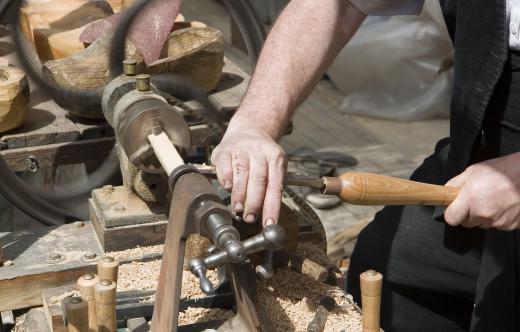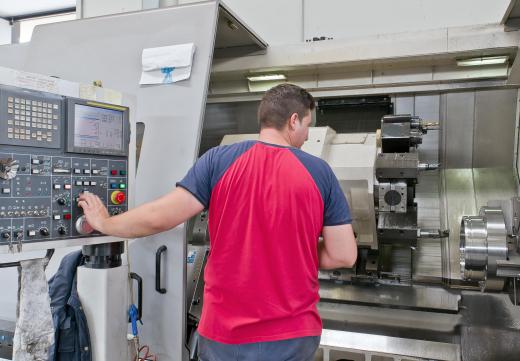Safety is the first priority when considering the best tips for lathe operation and, as with any power tool, wearing safety glasses might be the most important tip from a safety standpoint. Many of the risks associated with a lathe can be caused by unsafe working conditions, such as incorrectly clamped workpieces or loose clothing, so those things should be checked beforehand. One should also read the user’s manual carefully and understand the related safety protocols. Matching the lathe speed to the job also makes for easier, better operation.
Before attaching a workpiece or turning on the machine, one should be sure the lathe is configured properly. This might include securing the tool rests or cleaning the lathe before working. One also should keep tools away from the area in which the workpiece will be spinning and remove any large objects or tools before starting a lathe operation. When choosing a workpiece, the operator should make sure it is not too large or too small for the lathe.

The operator also should attach the workpiece using the proper configuration of the lathe chuck and mounts. Proper lathe operation often requires that the clamp and vice be the proper size for a given workpiece. Once attached, it is usually important to turn the workpiece manually to ensure that it will not interfere with proper lathe operation.
Effective lathe operation usually requires matching the proper lathe speed to a workpiece. Most lathes will specify which speeds are effective for various materials and processes. For instance, lower speeds are often used for roughing out while higher speeds are used for finishing. Before applying any tools to the workpiece, the lathe operator also should note the rotation direction.

Once lathe operation has begun, lathe operators should optimally use sharp, properly angled tools. Chipped, dull or otherwise ineffective tools can cause dangerous working conditions and should be replaced or sharpened. Forcing a tool to cut too deep should generally be avoided, especially when working with uneven materials such as wood. If one is sanding to finish a piece, it is important to use two hands and not to wrap the paper around the workpiece.

When the workpiece is ready, the machine should be turned off. One also might consider moving tools out of the way to avoid any accidents. A lathe operator also should wait for the workpiece to come to a complete stop before releasing it, because a moving workpiece can cause scrapes and other injuries. Clear off large pieces from the lathe that may have come free during the process.
